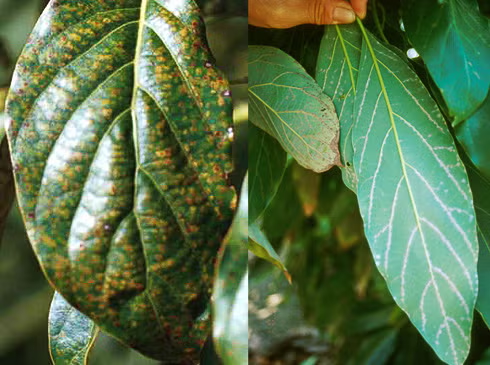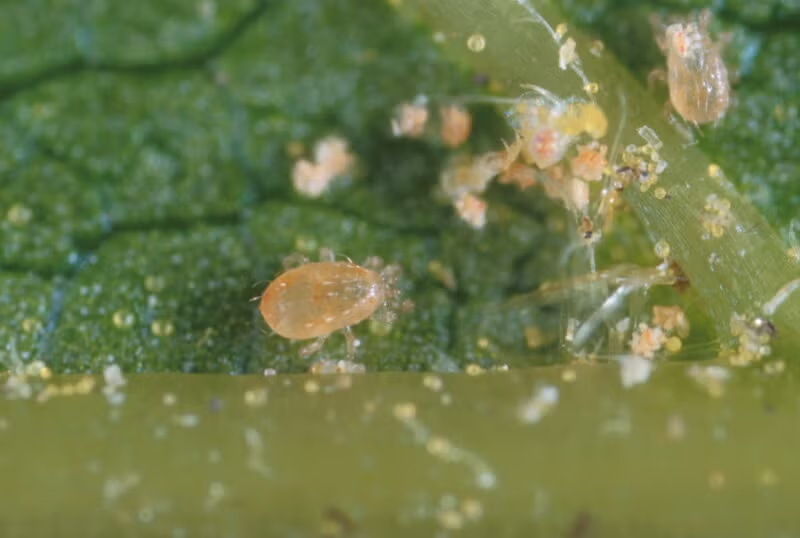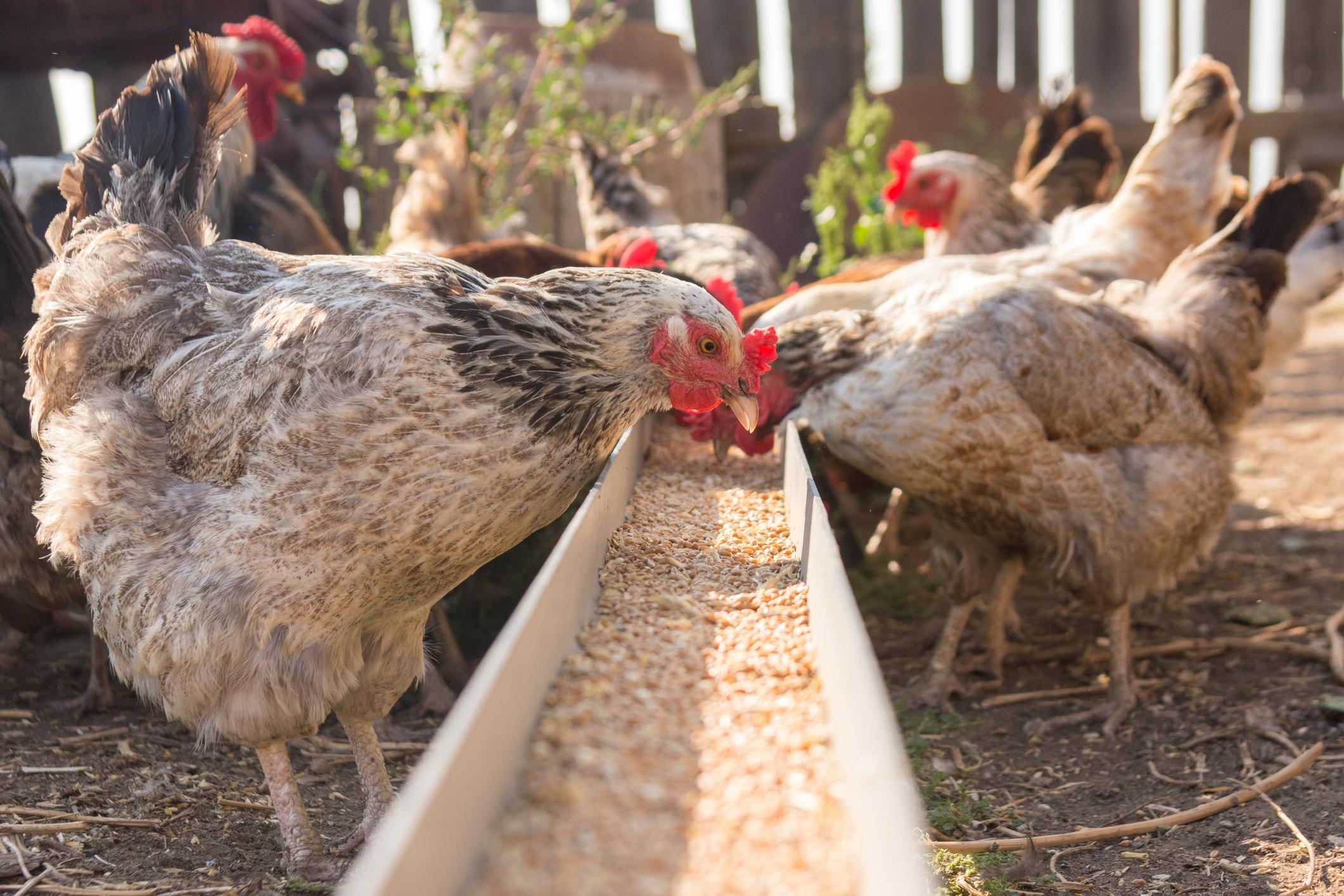
Kenya is the leading avocado producer in Africa and 6th in the world, with 1 million avocado farmers who farm over 77,000 acres, relying on this fruit for their livelihood.
Unfortunately, this thriving industry is facing extinction from an invasive pest spreading like wildfire from farm to farm. This is the persea mite, Oligonychus perseae.
Known to cause high leaf defoliation and fruit fall, most farmers are yet to understand what it is, what causes or spreads it, and how they can manage to prevent or control it.
Today we focus on understanding what persea mites are, their origin, life cycle, signs of infestation, how to identify them, and finally, the most effective way to control them.
We shall also understand whether it only affects avocados alone or if there are other crops at risk of infestation.
What Are Persea Mites (Oligonychus perseae)?
Persea mites are tiny arachnids that feed on avocado leaves, causing damage in the form of necrotic spots and defoliation. This has caused huge economic losses to thousands of Kenyan farmers who rely on avocado farming for their livelihoods.
Persea mite is native to Mexico in the state of Michoacán, where Hass avocado production is greatest.
It was first described in 1975 from specimens collected from avocado foliage intercepted from Mexico at an El Paso, Texas, quarantine facility.
Since then, it has been described in several countries including Costa Rica, Israel, Portugal, Spain, and Italy. It was first reported in Africa in Morocco in 2019.
In Kenya, it was first observed and reported in Nakuru County in November 2023, and since then it has spread to other counties.
So how does it manage to grow and spread that quickly?
The Life Cycle of Persea Mites
The persea mite undergoes five developmental stages:

Egg: The eggs are laid singly on the underside of leaves within protective silk nests. Eggs are round, pale yellow, and develop red eye spots as they mature. Mature female adults can lay 20-45 eggs.
Larva: Six-legged, pale yellow to greenish, emerging from the egg and beginning to feed on epidermal cells of the leaves.
Protonymph: Eight-legged, larger than the larva, continues feeding and developing.
Deutonymph: Further enlarged eight-legged stage, leading to adulthood.
Adult: Eight-legged; females are about 0.5 mm long, oval-shaped, slightly flattened, yellowish-green with dark spots; males are smaller and pear-shaped. The adult is the most destructive stage of the mite.

Throughout the entire life cycle, persea mites have the ability to feed on the leaves in 4 out of the 5 stages, which explains the rapid infestation.
Development from egg to adult takes about 10 days, though it may be shorter in warm temperatures of 30°C. Persea mite populations are often low in cold seasons below 20°C.
How Do Persea Mites Feed?
Persea mites feed in colonies on the underside of the leaf. They use their mouthparts to pierce the leaf tissue and suck sap, causing damage to the cells and removing chlorophyll.

Their feeding results in circular, yellow to dark brown necrotic spots on the leaves.
Severe infestations can lead to leaf wilt and defoliation, exposing trees to sunburn and potentially reducing fruit size and yield.
Persea mites are found on the underside of avocado leaves, often in colonies, and on the twigs.
The mites create a protective webbing around their feeding sites, often appearing as silvery spots on the underside of the leaf along the midrib and the veins.
This is what makes most insecticides ineffective against persea mites.
How Do Persea Mites Spread from One Tree to Another or from One Farm to Another?
Persea mites are primarily dispersed through wind-assisted movement using silk strands and by crawling between plant parts.
The most effective spread is through human activities like transporting infested plant material, equipment, or fruit.
While natural dispersal is limited to neighboring trees, human activity can lead to long-distance spread. The mites stick to garments, farm tools, and equipment and spread to other farms.
Signs and Symptoms of Persea Mite Infestation in Avocado
Circular Spots: Persea mites can be detected by distinct, circular, yellow to dark brown necrotic spots scattered along the veins and midribs on the underside of avocado leaves.

The spots become visible through the upper surface of green leaves on trees.

Bronzing: Bronzing effect is a gradual change in color to reddish brown. In avocado, the leaves turn from green to yellow to reddish brown, resulting in light-colored canopies upon heavy infestation.

Webbing: Protective and densely woven nests develop along the midribs and veins on the lower side of leaves, which appear as silvery spots. The mites lay eggs in the web.

How to Identify Persea Mites in Avocado
Persea mite monitoring requires early detection done by scouting. This should be done every 7-10 days.
Check for the signs and symptoms of infestation by observing the upper and underside of the leaf. To confirm the presence of persea mite, use any of the methods below:
- Use a hand lens and check the underside of the leaf.
- Get a leaf and expose the underside to direct sunlight for one minute. Observe the leaf to see movement of the mites.
- Sample leaves and shake them on white paper. Observe under the sun to see the presence of mites on the white surface.
How to Control Persea Mites in Hass Avocado
Since they are small in size and difficult to detect through normal mite observations, it only means you can only detect them from the damage resulting from infestation and identify them based on signs and symptoms.
The best way is implementing a preventive control measure on the crop calendar. According to the Centre for Invasive Species Research, release of predatory mites such as Neoseiulus californicus for persea mite control is very effective.
In Kenya, you can find it in the market as Spical Ulti-Mite from Koppert. Spical Ulti-Mite contains predatory mites that actively seek and feed on mites, naturally reducing their populations. It should be placed in the trees early before any sign is made as a precaution.
Though there is yet no specific chemical approved so far for total eradication of persea mites in Kenya, use of normal miticides can help in the control and prevention.
Farmers have reported that application of Escort (Emamectin benzoate 19 g/L), Emmaron (Lufenuron 100 g/L + Emamectin benzoate 200 g/L), Orthene (970 g/kg Acephate), or Dizon (Diazinon 600 g/L) is effective in total eradication of persea mites. However, affected leaves still defoliate in instances of heavy infestation.
When sourcing seedlings, check out for persea infestation to avoid spreading them to your farm.
When applying, begin with less infested areas heading to most infested areas to prevent spread. Tools used and clothing should always be cleaned with the insecticide too to prevent spread.
Read Also:Avocado Farming Business Plan Kenya 2025: Real Costs & Profit Analysis for Export Success
Though the Lamb Hass cultivar is quite resistant to persea mite, Pinkerton, Hass, and Gwen cultivars remain highly susceptible to persea mite infestation at the rankings of 30.2%, 37.4%, and 38.4% respectively.
The sad thing is that persea mites do not only affect avocados alone. Other host crops of persea mites include Prunus species (apricots, peaches, plums), ornamentals such as roses, acacia, and bamboo, weeds such as blackjack, Oxalis corniculata, Castanea sativa Mill., and Capsicum spp. Worst of all is that it also infests passion fruits, posing another threat to farmers who intercrop it or farm passion alone.
It is therefore advisable to keep the farm as clean of weeds and debris all the time. As an avocado farmer, how are you controlling persea mites?




